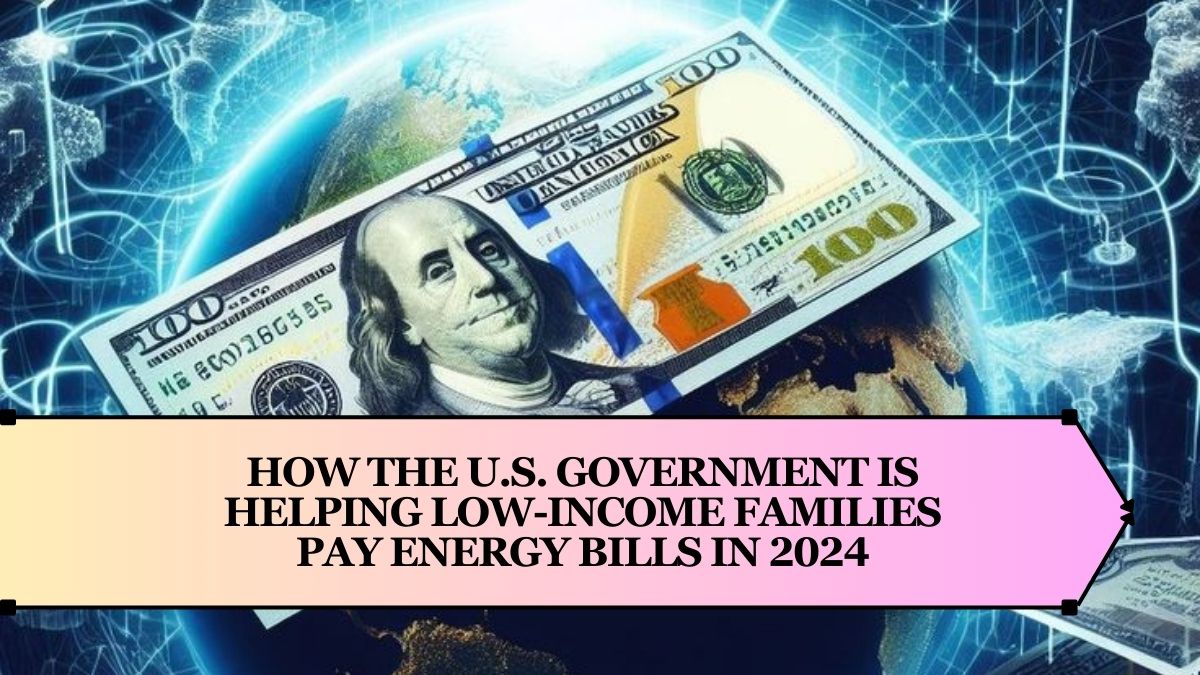In the United States, many families, especially those with low incomes, struggle to pay their energy bills. These bills can be a big burden, especially during cold or hot months. To help ease this financial strain, the U.S. government has created various programs that offer financial assistance to those who need it most. One of the most well-known of these programs is the Low-Income Energy Assistance Program (LIHEAP), which helps eligible individuals cover their energy costs. In this article, we will discuss how these programs work, how you can apply for help, and whether they can be combined with Social Security benefits to provide additional support.
Government Help for Energy Bills
Energy costs, especially for heating and cooling, can be very expensive. This is especially true for families with low incomes. To help these families, the U.S. government has set up several programs that assist with energy bills. One of the most important of these programs is LIHEAP.
What is LIHEAP?
LIHEAP stands for the Low-Income Energy Assistance Program. It helps low-income families pay their energy bills. LIHEAP can help with heating, cooling, and other essential energy services like electricity and gas. The amount of help you can get depends on things like your household income, family size, and which state you live in.
Eligibility for LIHEAP
To qualify for LIHEAP, you must meet certain income requirements. These requirements may be different depending on where you live. Typically, households that earn a certain percentage of the federal poverty level are eligible. Certain groups of people, such as seniors, individuals with disabilities, and families with young children, are often given priority for assistance.
How to Apply for LIHEAP
The application process for LIHEAP is fairly simple, but it can differ by state. Generally, you will need to provide proof of your income and show that you are struggling to pay your energy bills. Some states may also require additional documents to confirm that your financial situation is causing the problem.
Other Assistance Programs
In addition to LIHEAP, there are other ways the government helps with energy costs. For example, some states offer energy efficiency tax credits. These credits can help reduce the cost of energy-efficient appliances, which use less energy. Other programs may provide subsidies for households that are at risk of losing power.
Combining Energy Help with Social Security Benefits
Many people who rely on Social Security benefits may wonder if they can also get help with their energy bills. The good news is that it is possible to combine these programs. If you receive Supplemental Security Income (SSI) or Social Security retirement benefits, you may be eligible for energy assistance. This can provide extra relief, especially during the months when energy costs are high.
How Social Security Benefits Affect Energy Assistance
Receiving Social Security payments does not impact your eligibility for energy assistance programs like LIHEAP. In fact, these programs are meant to help people with low incomes, including those who receive Social Security benefits. Some states even offer automatic approval for people who receive SSI or Social Security benefits, making the process even easier.
How to Apply for Combined Assistance
If you receive Social Security benefits, you may not need to apply separately for energy assistance. In some states, people who get Social Security benefits are automatically eligible for energy help. However, it is important to check with your state to see if you need to apply separately or if your approval is automatic.
Conclusion
The U.S. government offers several programs to help low-income families pay their energy bills. Programs like LIHEAP are especially important for people who struggle with high energy costs. For those who receive Social Security benefits, combining these assistance programs can provide even more support without affecting their regular Social Security payments. By staying informed and applying for these programs, families can receive much-needed help to pay their bills and reduce the financial stress of rising energy costs.
FAQ’s
What is LIHEAP?
LIHEAP stands for the Low-Income Energy Assistance Program, which helps low-income families pay their energy bills.
How do I apply for energy bill assistance?
The application process varies by state, but generally requires proof of income and documentation of your energy needs.
Can I get energy bill assistance if I receive Social Security?
Yes, you can combine Social Security benefits with energy assistance programs like LIHEAP to receive extra help.
Are there other programs besides LIHEAP for energy assistance?
Yes, other programs include energy efficiency tax credits and special subsidies for power outages.
Do these programs affect my Social Security payments?
No, energy assistance programs do not affect your Social Security benefits.

